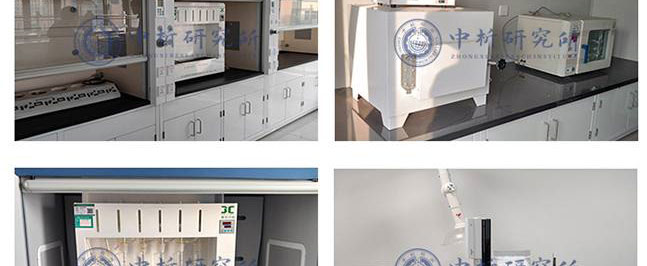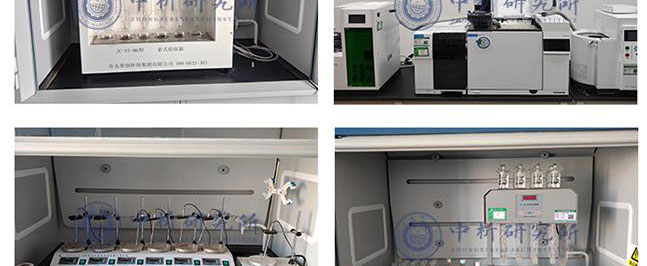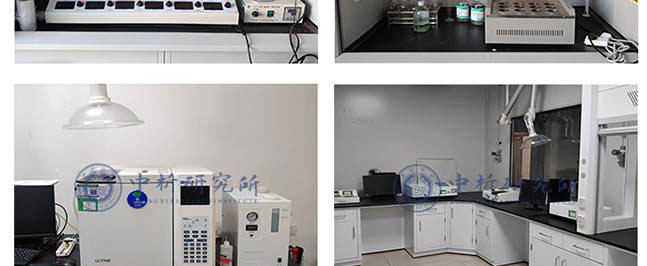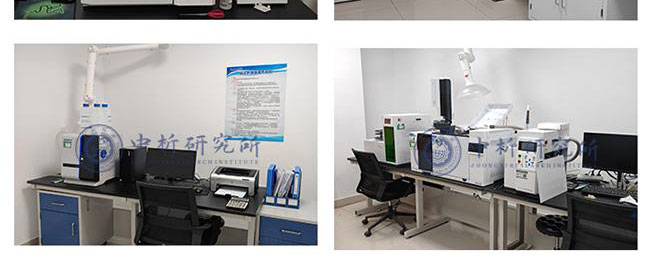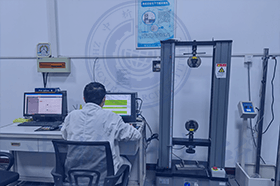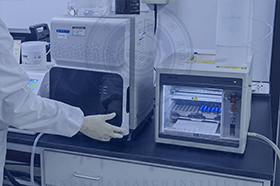國家標準 GB/T 507-1986 絕緣油介電強度測定法
【適用范圍】
【中國標準分類】 G40 石油產品
【國際標準分類】 83.060-橡膠
國家標準 GB/T 42125.10-2022 測量、控制和實驗室用電氣設備的安全要求 第10部分:絕緣電阻測量和介電強度試驗設備的特殊要求
【適用范圍】除下述內容外,IEC61010-1的第1章均適用。
1.1.1 本文件適用的設備
代替:
用下列內容代替:
本系列安全標準主要預定用作范圍內提及的相關產品的產品安全標準,根據IEC指南104和 ISO/IEC指南51中規定的原則,技術委員會在對類似于本文件范圍內提及的產品制定相關文件時也應使用本文件。
本文件規定了輸出電壓交流50V或直流120V以上絕緣電阻測量和介電強度試驗用設備的安全要求。
本文件也適用于具有絕緣電阻測量功能或介電強度試驗功能的組合測量設備。
1.1. 2不包括在本文件范圍內的設備
增加:
增加下列新的列項:
aa) IEC61557-8交流1000V和直流1500V以下低壓配電系統電氣安全 防護措施的試驗、測 量或監控設備 第8部分:IT系統的絕緣監控裝置;
bb) IEC61557-9交流1000V和直流1500V以下低壓配電系統電氣安全 防護措施的試驗、測量或監控設備 第9部分:IT系統中的絕緣故障定位設備。
【中國標準分類】 E38 電工儀器儀表
【國際標準分類】 75.080-石油產品綜合
行業標準 DL/T 846.7-2016 高電壓測試設備通用技術條件第7部分:絕緣油介電強度測試儀
【適用范圍】本部分規定了絕緣油介電強度測試儀的技術要求、試驗方法、檢驗規則、銘牌、包裝、運輸和儲存等要求。
本部分適用于絕緣油介電強度測試儀的生產、檢驗、使用及維修。
【中國標準分類】 F24 電力
【國際標準分類】 29.240.99-其他有關輸電網和配電網的設備
行業標準 DL/T 846.7-2004 高電壓測試設備通用技術條件 第7部分:絕緣油介電強度測試儀
【適用范圍】DL/T 846的本部分規定了絕緣油介電強度測試儀的產品分類、技術要求、試驗方法、檢驗規則、包裝、運輸、儲存等。 本部分適用于絕緣油介電強度測試儀。蓋測試儀主要用于電力、石油、化工等部門進行絕緣油的介電強度測試。
【中國標準分類】 F24 電力
【國際標準分類】 27.100-電站綜合
行業標準 JJF (機械) 1062-2021 石油蠟和石油脂介電強度測定法
【適用范圍】本標準規定了石油蠟和石油脂常態下介電強度的測定方法。rn本標準適用于能夠制備平整光滑蠟片的石油蠟或石油蠟熔合物,以及石油脂介電強度的測定。rn
【中國標準分類】 K10 石油產品
【國際標準分類】 29.035-絕緣材料
國際標準 IEC 60243-1-1998 絕緣材料的介電強度試驗方法.第1部分:在市電頻率下的試驗
【適用范圍】This part of IEC 60243 gives methods of test for the determination of the short-time electric strength of solid insulating materials at power frequencies
that is
those between 48 Hz and 62 Hz. It does not consider the testing of liquids and gases
although these are specified and used as impregnants or surrounding media for the solid insulating materials being tested.nNOTE - Methods for the determination of breakdown voltages along the surfaces of solid insulating materials are included.
【中國標準分類】 K15 電工材料和通用零件
【國際標準分類】 29.035-絕緣材料
國際標準 IEC 60243-2-2013 固體絕緣材料的介電強度--測試方法--第2部分:直流試驗的補充技術要求
【適用范圍】This part of IEC 60243 gives requirements additional to those in IEC 60243-1 for thendetermination of the electric strength of solid insulating materials under direct voltage stress.
【中國標準分類】 K15 基礎科學
【國際標準分類】 29.035.01-絕緣材料綜合
國外標準 ASTM D2477-2007 商業電源頻率下絕緣氣體介電擊穿電壓和介電強度的試驗方法
【適用范圍】
The dielectric breakdown voltage and dielectric strength of an insulating gas in a uniform field depends primarily on the molecular structure of the gas. As different gases are mixed either by plan or by contamination
any change in dielectric breakdown voltage and dielectric strength will depend on both the nature and proportion of the individual gases. This test method uses plane and spherical electrodes which provide a nearly uniform field (see Appendix) in the area of electrical discharge. It is suitable for determining the dielectric breakdown voltage and dielectric strength of different gases and mixtures thereof for research and application evaluations and also as a field test. A more complete discussion of the significance of the dielectric strength test is given in the Appendix.
1.1 This test method covers the determination of the dielectric breakdown voltage and dielectric strength of insulating gases used in transformers
circuit breakers
cables
and similar apparatus as an insulating medium. The test method is applicable only to gases with boiling points below room temperature at atmospheric pressure.
1.2 This standard may involve hazardous materials
operations
and equipment. This standard does not purport to address all of the safety concerns
if any
associated with its use. It is the responsibility of the user of this standard to establish appropriate safety and health practices and determine the applicability of regulatory limitations prior to use.
1.3 Mercury has been designated by EPA and many state agencies as a hazardous material that can cause central nervous system
kidney and liver damage. Mercury
or its vapor
may be hazardous to health and corrosive to materials. Caution should be taken when handling mercury and mercury containing products. See the applicable product Material Safety Data Sheet (MSDS) for details and EPA''s website 8212; http://www.epa.gov/mercury/faq.htm for additional information. Users should be aware that selling mercury and/or mercury containing products into your state may be prohibited by state law.
【中國標準分類】 K15 電工材料和通用零件
【國際標準分類】 29.035.01-絕緣材料綜合
國外標準 ASTM D3426-1997(2012) 商業電源頻率下絕緣氣體介電擊穿電壓和介電強度的試驗方法
【適用范圍】1.1 This test method covers the determination of the dielectric breakdown voltage and dielectric strength of insulating gases used in transformers
circuit breakers
cables
and similar apparatus as an insulating medium. The test method is applicable only to gases with boiling points below room temperature at atmospheric pressure. 1.2 This standard does not purport to address all of the safety concerns
if any
associated with its use. It is the responsibility of the user of this standard to establish appropriate safety and health practices and determine the applicability of regulatory limitations prior to use. 1.3 Mercury has been designated by EPA and many state agencies as a hazardous material that can cause central nervous system
kidney and liver damage. Mercury
or its vapor
may be hazardous to health and corrosive to materials. Caution should be taken when handling mercury and mercury containing products. See the applicable product Material Safety Data Sheet (MSDS) for details and EPA's website http://www.epa.gov/mercury/faq.htm for additional information. Users should be aware that selling mercury and/or mercury containing products into your state may be prohibited by state law.
【中國標準分類】 K15 電工材料和通用零件
【國際標準分類】 29.040.20-絕緣氣體
國外標準 ASTM D3426-1997(2004) 用脈沖波法測定固體電絕緣材料的介電擊穿電壓及介電強度的試驗方法
【適用范圍】
Insulating materials used in high-voltage equipment may be subjected to transient voltage stresses
resulting from such causes as nearby lightning strokes. This is particularly true of apparatus such as transformers and switchgear used in electrical-power transmission and distribution systems. The ability of insulating materials to withstand these transient voltages is important in establishing the reliability of apparatus insulated with these materials.
Transient voltages caused by lightning may be of either positive or negative polarity. In a symmetrical field between identical electrodes
the polarity has no effect on the breakdown strength. However
with dissimilar electrodes there may be a pronounced polarity effect. It is common practice when using dissimilar electrodes
to make negative that electrode at which the higher gradient will appear. When asymmetrical electrodes are used for testing materials with which the tester has no previous experience or knowledge
it is recommended that he make comparative tests with positive polarity and negative polarity applied to the higher gradient
or smaller electrode
to determine which polarity produces the lower breakdown voltage.
The standard wave shape is a 1.2 by 50-x03BC;s wave
reaching peak voltage in approximately 1.2 x03BC;s and decaying to 50 % of peak voltage in approximately 50 x03BC;s after the beginning of the wave. This wave is intended to simulate a lightning stroke that may strike a system without causing failure on the system.
For most materials
the impulse dielectric strength will be higher than either its power frequency alternating voltage or its direct voltage dielectric strengths. Because of the short time involved
dielectric heating and other thermal effects are largely eliminated during impulse testing. Thus
the impulse test gives values closer to the intrinsic breakdown strength than do longer time tests. From comparisons of the impulse dielectric strength with the values obtained from longer time tests
inferences may be drawn as to the modes of failures under the various tests for a given material. Appendix X1 of Test Method D 149 should be referred to for further information on this subject.
1.1 This test method covers the determination of dielectric strength of solid electrical insulating materials under simulated-lightning impulse conditions.
1.2 Procedures are given for tests using standard 1.2 by 50 s full-wave impulses.
1.3 This test method is intended for use in determining the impulse dielectric strength of insulating materials
either using simple electrodes or functional models. It is not intended for use in impulse testing of apparatus.
1.4 This test method is similar to IEC Publication 243-3. All procedures in this test method are included in IEC 243-3. Differences between this test method and IEC 243-3 are largely editorial.
1.5 This standard does not purport to address all of the safety concerns
if any
associated with its use. It is the responsibility of the user of this standard to establish appropriate safety and health practices and determine the applicability of regulatory limitations prior to use. Specific precaution statements are given in Section 9.
【中國標準分類】 K15 電工材料和通用零件
【國際標準分類】 29.035.01-絕緣材料綜合
國外標準 BS 2918-2-1994 航空航天系列.斷路器.試驗方法.介電強度
【適用范圍】
【中國標準分類】 V40 航空器及其附件
【國際標準分類】 49.060-航空航天用電氣設備與系統
國外標準 BS EN 50289-1-3-2001(R2006) 通信電纜.試驗方法規范.電氣試驗方法.介電強度
【適用范圍】Details the test methods to verify the dielectric strength of the insulation of the finished cables used in analogue and digital communication systems. To be read in conjunction with BS EN 50289-1-1:2001
【中國標準分類】 K13 電工材料和通用零件
【國際標準分類】 33.120.10-同軸電纜、波導
國外標準 BS EN 60243-1-2013 固體絕緣材料介電強度試驗方法.電源頻率下的試驗
【適用范圍】This part of IEC 60243 gives methods of test for the determination of the short-time electric strength of solid insulating materials at power frequencies
that is
those between 48 Hz and 62 Hz. It does not consider the testing of liquids and gases
although these are specified and used as impregnants or surrounding media for the solid insulating materials being tested.nNOTE - Methods for the determination of breakdown voltages along the surfaces of solid insulating materials are included.
【中國標準分類】 K15 電工材料和通用零件
【國際標準分類】 29.035.01-絕緣材料綜合
國外標準 BS EN 60243-2-2001 固體絕緣材料介電強度試驗方法.直流電壓測試補充要求
【適用范圍】To be read in conjunction with BS EN 60243-1:1998
【中國標準分類】 K15 電工材料和通用零件
【國際標準分類】 29.035.01-絕緣材料綜合
國外標準 BS EN 60243-3-2002 固體絕緣材料介電強度試驗方法.1.2/50s沖擊試驗補充要求
【適用范圍】This part of IEC 60243 gives requirements additional to those in IEC 60243-1 for the determination of the electric strength of solid insulating materials under 1
2/50 μs impulse voltage stress.
【中國標準分類】 K15 電工材料和通用零件
【國際標準分類】 29.035.01-絕緣材料綜合
國外標準 BS EN 60243-3-1994 固體絕緣材料介電強度的試驗方法.脈沖電壓試驗的附加要求
【適用范圍】
【中國標準分類】 K15 電工材料和通用零件
【國際標準分類】 29.035.01-絕緣材料綜合
國外標準 DIN VDE 0472-509-1986 航空和航天 斷路器 試驗方法 第301部分:介電強度
【適用范圍】This standard specifies a method of verifying the dielectric strength of circuit breakers. It shall be used together with DIN EN 3841-100.
【中國標準分類】 V40 航空器及其附件
【國際標準分類】 49.060-航空航天用電氣設備與系統
國外標準 DIN EN 50289-1-3-2002 通信電纜.試驗方法規范.第1-3部分:電氣試驗方法.介電強度
【適用范圍】The document details the test methods to verify the dielectric strenght of the insulation of the finished cables used in analogue and digital communication systems.
【中國標準分類】 K13 電工材料和通用零件
【國際標準分類】 33.120.20-導線和對稱電纜
國外標準 ANSI/ASTM D149a-1997 固體電絕緣材料在工業電源頻率下的介電擊穿電壓和介電強度的試驗方法
【適用范圍】This test method covers procedures for the determination of dielectric strength of solid insulating materials at commercial power frequencies
under specified conditions.<(hoch)
> Unless otherwise specified
the tests shall be made at 60 Hz. However
this test method may be used at any frequency from 25 to 800 Hz. At frequencies above 800 Hz
dielectric heating may be a problem. This test method is intended to be used in conjunction with any ASTM standard or other document that refers to this test method. References to this document should specify the particular options to be used (see ). It may be used at various temperatures
and in any suitable gaseous or liquid surrounding medium. This test method is not intended for measuring the dielectric strength of materials that are fluid under the conditions of test. This test method is not intended for use in determining intrinsic dielectric strength
direct-voltage dielectric strength
or thermal failure under electrical stress (see Test Method D 3151). This test method is most commonly used to determine the dielectric breakdown voltage through the thickness of a test specimen (puncture). It may also be used to determine dielectric breakdown voltage along the interface between a solid specimen and a gaseous or liquid surrounding medium (flashover). With the addition of instructions modifying Section
this test method may be used for proof testing. This test method is similar to IEC Publication 243-1. All procedures in this method are included in IEC 243-1. Differences between this method and IEC 243-1 are largely editorial. This standard does not purport to address all of the safety concerns
if any
associated with its use. It is the responsibility of the user of this standard to establish appropriate safety and health practices and determine the applicability of regulatory limitations prior to use. Specific hazard statements are given in Section . Also see .
【中國標準分類】 K15 電工材料和通用零件
【國際標準分類】 29.035.01-絕緣材料綜合
國外標準 ANSI/ASTM D149-1995 固體電絕緣材料在工業用電頻率下的介電擊穿電壓和介電強度的試驗方法(10.01)
【適用范圍】This test method covers procedures for the determination of dielectric strength of solid insulating materials at commercial power frequencies
under specified conditions.<(hoch)
> Unless otherwise specified
the tests shall be made at 60 Hz. However
this test method may be used at any frequency from 25 to 800 Hz. At frequencies above 800 Hz
dielectric heating may be a problem. This test method is intended to be used in conjunction with any ASTM standard or other document that refers to this test method. References to this document should specify the particular options to be used (see ).It may be used at various temperatures
and in any suitable gaseous or liquid surrounding medium. This test method is not intended for measuring the dielectric strength of materials that are fluid under the conditions of test. This test method is not intended for use in determining intrinsic dielectric strength
direct-voltage dielectric strength
or thermal failure under electrical stress (see Test Method D 3151).This test method is most commonly used to determine the dielectric breakdown voltage through the thickness of a test specimen (puncture). It may also be used to determine dielectric breakdown voltage along the interface between a solid specimen and a gaseous or liquid surrounding medium (flashover). With the addition of instructions modifying Section
this test method may be used for proof testing. This test method is similar to IEC Publication 243-1. All procedures in this method are included in IEC 243-1. Differences between this method and IEC 243-1 are largely editorial. This standard does not purport to address all of the safety concerns
if any
associated with its use. It is the responsibility of the user of this standard to establish appropriate safety and health practices and determine the applicability of regulatory limitations prior to use. Specific hazard statements are given in Section . Also see .
【中國標準分類】 K15 電工材料和通用零件
【國際標準分類】 29.035.01-絕緣材料綜合
國外標準 ANSI/ASTM D3426-1995 用沖擊波測定電氣固體絕緣材料的電介質擊穿電壓和介電強度的試驗方法(10.02)
【適用范圍】This test method covers the determination of dielectric strength of solid electrical insulating materials under simulated-lightning impulse conditions. Procedures are given for tests using standard 1.2 by 50 s full-wave impulses. This test method is intended for use in determining the impulse dielectric strength of insulating materials
either using simple electrodes or functional models. It is not intended for use in impulse testing of apparatus. This test method is similar to IEC Publication 243-3. All procedures in this test method are included in IEC 243-3. Differences between this test method and IEC 243-3 are largely editorial. This standard does not purport to address all of the safety concerns
if any
associated with its use. It is the responsibility of the user of this standard to establish appropriate safety and health practices and determine the applicability of regulatory limitations prior to use. Specific precaution statements are given in Section 9.
【中國標準分類】 K15 電工材料和通用零件
【國際標準分類】 29.035.01-絕緣材料綜合
國外標準 ANSI/ASTM D3755-1997 直流電壓應力下電氣絕緣材料的介電擊穿電壓和介電強度的試驗方法
【適用范圍】This test method covers the determination of dielectric breakdown voltage and dielectric strength of solid electrical insulating materials under direct-voltage stress. Since some materials require special treatment
reference should also be made to ASTM specifications or to the test method directly applicable to the material to be tested. See Test Method D 149 for the determination of dielectric strength of electrical insulating materials at commercial power frequencies. This test method is similar to IEC Publication 243-2. All procedures in this test method are included in IEC 243-2. Differences between this test method and IEC 243-2 are largely editorial. This standard does not purport to address all of the safety concerns
if any
associated with its use. It is the responsibility of the user of this standard to establish appropriate safety and health practices and determine the applicability of regulatory limitations prior to use. Specific precaution statements are given in Section 7.
【中國標準分類】 K15 電工材料和通用零件
【國際標準分類】 29.035.01-絕緣材料綜合
國家標準 GB/T 3333-1999 電纜紙工頻擊穿電壓試驗方法
【適用范圍】 本標準規定了電纜紙介電強度--工頻擊穿電壓測定方法。 本標準適用于測試未浸漬電力電纜或與之類似的纖維絕緣紙工頻電壓下的擊穿強度。
【中國標準分類】 U60 造紙
【國際標準分類】 47.020.70-導航和控制設備
國家標準 GB/T 15579.10-2020 弧焊設備 第10部分:電磁兼容性(EMC)要求
【適用范圍】GB/T15579的本部分規定了:
a)射頻發射的標準和試驗方法;
b)諧波電流發射、電壓波動和閃爍的標準和試驗方法;
c)抗擾度要求和試驗方法,包括連續騷擾、瞬態騷擾、傳導騷擾、輻射騷擾和靜電放電。
本部分適用于弧焊及類似工藝的設備,包括電源及輔助設備,如送絲裝置、冷卻系統、引弧和穩弧裝置等。
注1:類似工藝是指如等離子切割,電弧螺柱焊等。
注2:本部分不涉及弧焊設備的基本安全要求,如防電擊、非常規運行、絕緣配合和相關的介電強度試驗。
按照本部分進行型式試驗并符合要求的弧焊設備,適用于所有應用場所。
【中國標準分類】 J64 通用加工工藝
【國際標準分類】 25.160.30-焊接設備
國家標準 GB/T 15579.10-2008 弧焊設備 第10部分:電磁兼容性(EMC)要求
【適用范圍】本部分規定了:rna)射頻發射的標準和試驗方法;rnb)諧波電流發射、電壓波動和閃爍的標準和試驗方法;rnc)抗擾度要求和試驗方法,包括連續騷擾、瞬態騷擾、傳導騷擾、輻射騷擾和靜電放電。rn本部分適用于弧焊及類似工藝的設備,包括電源及輔助設備,如送絲裝置、冷卻系統、引弧和穩弧裝置等。rn注1:類似工藝是指如等離子切割,電弧螺柱焊等工藝。rn注2:本部分不涉及弧焊設備的基本安全要求,如防電擊、非常規運行、絕緣配合和相關的介電強度試驗。rn本部分適用于所有場合的弧焊設備。
【中國標準分類】 J64 通用加工工藝
【國際標準分類】 25.160.30-焊接設備
國家標準 GB/T 18211-2017 微電機安全通用要求
【適用范圍】本標準規定了微電機的安全要求,包括標志、泄漏電流、絕緣介電強度、絕緣電阻、電氣間隙和爬電距離、結構、機械強度、保護接地、防護、防銹、濕熱、耐熱變形性、阻燃性、非正常工作、電磁兼容性及檢驗規則。
本標準適用于GB/T7345所規定的控制電機及其他用途的微電機(以下簡稱電機)。
【中國標準分類】 K24 旋轉電機
【國際標準分類】 29.160.30-電動機
行業標準 JB/T 9439-1999 載體擊穿電壓測定方法
【適用范圍】本標準適用于靜電復印干式雙組份顯影劑載體(以下簡稱載體)的擊穿電壓和介電強度的測定。
【中國標準分類】 Э29 電影、照相、縮微、復印設備
【國際標準分類】 31.100-電子管
4、雙方將就檢測項目進行詳細溝通,并簽署保密協議,以保證客戶信息的保密性。在此基礎上,我們將進行測試試驗.
















